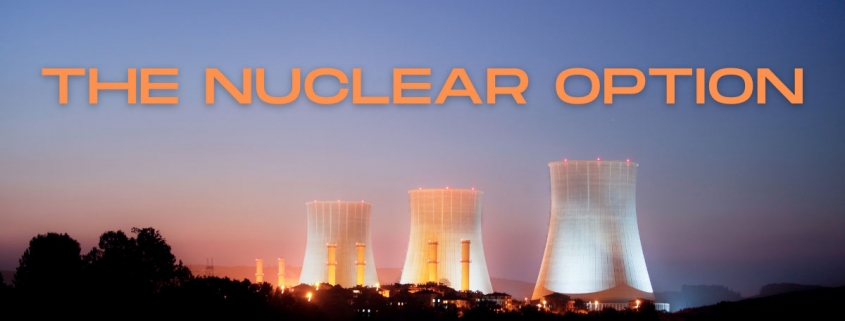Data center operators ponder the nuclear option
As major businesses feel a growing sense of urgency to dramatically cut carbon emissions, opinions are starting to shift in favor of nuclear power, which is not classed as clean, but is a near-zero carbon energy source. The digital infrastructure industry, a major global consumer of energy, has a role to play in rehabilitating nuclear, and in marrying it to intermittent renewable energy to provide firm zero-emission power.
There is considerable reluctance to use, or endorse, the use of nuclear power, largely stemming from a fear of meltdowns and concerns about nuclear waste. These worries are likely to be overcome by the need for dispatchable, low-carbon power generation that does not depend on local weather. From 2022, we expect some major data center operators, and industry influencers and leaders, to support nuclear power more actively and openly — even pressuring governments and utilities to invest in this option.
We see three areas where the data center industry may have an active role in supporting a significant shift toward nuclear power. First, some data center operators are likely to publicly endorse nuclear as a carbon neutral power source. The EU’s Carbon Neutral Data Centre Pact, an industry initiative, has publicly declared nuclear power acceptable in a zero-emission energy mix. US hyperscalers Amazon Web Services, Google and Microsoft all mention on their websites the role of nuclear power in providing low-carbon electricity.
Second, we expect more data center operators to buy nuclear power, where available, as part of the mix in their power purchase agreements (PPAs), as a carbon-friendly alternative to 100% renewable energy. Some operators, for example, have already started exploring a combination of renewable and nuclear electricity purchases to guarantee a facility is always supplied with low-carbon content. Historically, most corporate PPAs and green financing mechanisms have been limited to renewable power (and excluded nuclear) to satisfy environmental concerns.
The financial case for including nuclear power in a PPA contract is that there will be greater long-term price stability – compared with all-renewable PPAs (as well as energy certificates and carbon offsets), which can become increasingly oversubscribed, pushing up prices. But without investments in more new plants, nuclear power will gradually diminish in the US, Europe and Japan — even if other countries, such as China and India, continue to invest in the construction of new nuclear plants. Utilities will dispatch coal and gas power to fill the shortfall when there is insufficient renewable energy.
This leads on to the third point: next-generation reactors. Some significant private backers, and several governments, including the US, UK and France, are funding the development of new, modularized designs (known as SMRs, or small modular reactors). In a plan revised in 2021, the US Department of Energy (DOE) has committed $1.4B to the construction of a power plant using a cluster of SMRs from NuScale, a US startup. In the UK, the government awarded a total of £210M ($280M) to Rolls-Royce, matched by a private equity investment of £195M ($260M), to move the company’s SMR design toward completion. South Korea is close to fully certifying an SMR from local startup the Korea Atomic Energy Research Institute (KAERI). These are only some examples of active development projects in SMR development.
There are three key innovations behind SMRs:
- Simplified reactor and plant design.
- Extensive prefabrication.
- Passive safety systems, which don’t rely on active controls for cooling but use convection, pressure or other forces. This eliminates the requirement for emergency backup power, as already agreed by nuclear safety regulators in the case of NuScale.
Not only are SMRs proposed for the grid, but some of the hyperscalers have reportedly expressed interest in funding new sites that can supply power directly. At 10–100 megawatts electrical output, some of the next-generation modular reactors will be small enough for large data center operators to fund through PPAs. The projected cost for SMR plants, once in volume production, is a few hundred million dollars, and each would take only three to five years to build (compared with the current timeline of seven to 10 years for conventional nuclear plants).
If they deliver, SMRs could potentially become attractive for large data center campuses (potentially connecting directly), and for municipalities with a large concentration of data centers and other large energy users. SMRs also tend to have fuel preloaded for over 10 years at full capacity, eliminating the need for costly, complex and disruptive refueling. There are, of course, many issues and objections, including the need for power redundancy, cost, security, safety and the difficulty of matching the SMR lifespans to the data center.
Opponents argue there is neither the time nor need for next-generation nuclear. But a renewable energy-only strategy is a bet on grid-scale energy storage technologies that do not exist, and on high-capacity power transmission links for which there are no plans. Worse still, a renewable energy-only strategy adds risk to power security due to the unpredictability of extreme weather events because of climate change.
Owing to its more dynamic build activity, and large energy requirement compared with other industries, the data center sector could play an outsized role in rehabilitating nuclear and steering the future of energy.
The full report Five data center predictions for 2022 is available here.


 UI 2020
UI 2020



 2020
2020


